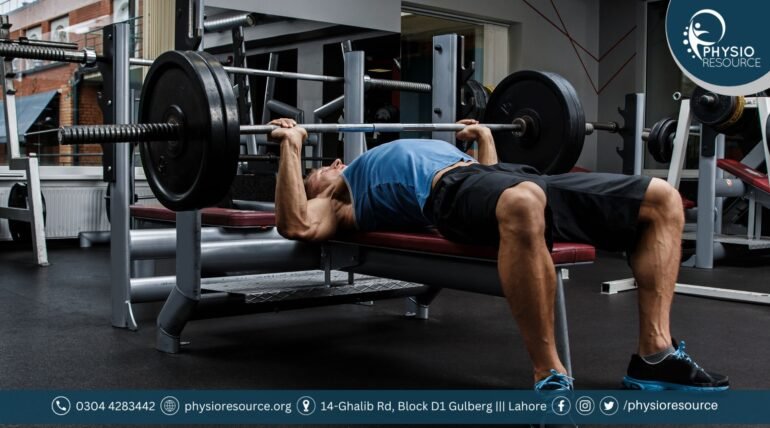
Build a Stronger Chest with This Proven Exercise
Do you want a better-toned, powerful chest without wasting time on unnecessary workouts? Research in sports science and physiotherapy suggests that the barbell bench press is still the best chest exercise for strengthening the pectoral muscles, improving posture, and developing strength. It is a complex exercise that, when performed correctly, produces quick and noticeable results since it works your triceps and shoulders in addition to your pectoralis major, the main chest muscle. Including the appropriate chest exercises in the routine can change your upper body strength and enhance your functional movement, regardless of your fitness goals, injury recovery, or muscle imbalances.

What Research Says About the Barbell Bench Press
Not only is the barbell bench press well-liked, it has also been shown to be successful. Leading platforms for sports science and physiotherapy, such as Anytime Fitness, Muscle & Strength, BalancePT, and Physio-Pedia, state that this compound movement activates:
- Major pectoralis muscle (chest muscle)
- Deltoids anterioris (front shoulders)
- Brachial triceps
- Stabilisers of the core
The ability to target several upper body muscular groups simultaneously makes this exercise unique and promotes quicker strength development and a noticeable chest. Using a full range of motion when performing the bench press results in the following benefits, according to research published in PubMed and backed by Wikipedia:
- More neuromuscular flexibility
- Enhanced endurance and strength of muscles
- Enhanced posture and functional mobility

Top Chest Exercises Recommended by Physiotherapist
Although the barbell bench press is the most popular exercise for the chest, physiotherapists advise combining it with a few others to promote balanced growth and lower the chance of injury:
- Push-Ups (Bodyweight Hero): A straightforward yet effective, equipment-free exercise that works the entire chest. Excellent for novices and during periods of rehabilitation.
- Incline dumbbell press: focusses on the upper chest, which is crucial for strengthening the shoulders and maintaining proper posture.
- Chest Fly (Cable or dumbbell): Great for isolating muscles, particularly during post-injury rehabilitation to restore range of motion and control.
- Chest Press with Resistance Band: In physiotherapy sessions and at-home routines for gradual strength training, it is very effective and gentle on joints.
Why Chest Exercises Are More Than Just Aesthetic
- Chest muscles are useful for:
- Increasing the effectiveness of breathing
- Improving posture lowering discomfort in the upper back and shoulders
- Improving performance in routine tasks such as lifting or pushing
To prevent strain or overuse problems, physiotherapists also focus on, breathing, and progression, particularly for people who are returning from an injury or who live sedentary lifestyle.
Need a Chest Workout That’s Right for You?
For all fitness levels, whether you’re just starting, recovering from surgery, or looking to tone your upper body safely and effectively, we at Physio Resource provide personalised chest strengthening programs. Our skilled fitness-focused physiotherapists and rehab specialists in Lahore provide posture correction, guided sessions, and professional advice to help you train more effectively rather than intensely.
with Physio Resource right now.
Physio Resource
Phone No: 0304-4283442
Address: 93-A1, Gurumangat Road, Gullberg, III Lahore
Author:
By Dr. Ahmad Bilal, Senior Physiotherapist
MS NMPT | 7+ Years of Experience in Pain Management and Rehabilitation
Over 7 years of clinical experience, specializing. Ahmad Bilal is a renowned physiotherapist with more than 7 years of clinical experience, who specializes in musculoskeletal and neuromuscular rehabilitation. Strength training, functional movement recovery, and evidence-based pain management are his areas of expertise. Dr. Bilal is currently employed at Physio Resource, where he provides individualized care programs to assist patients in restoring strength, correcting posture, and healing over the long term.


